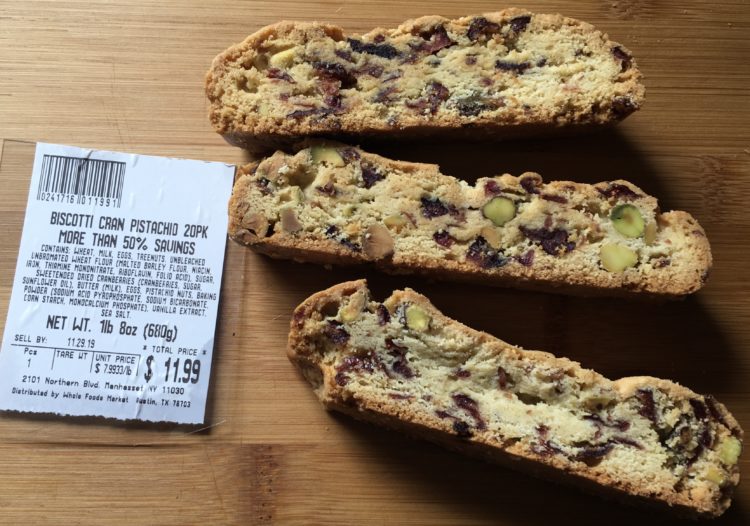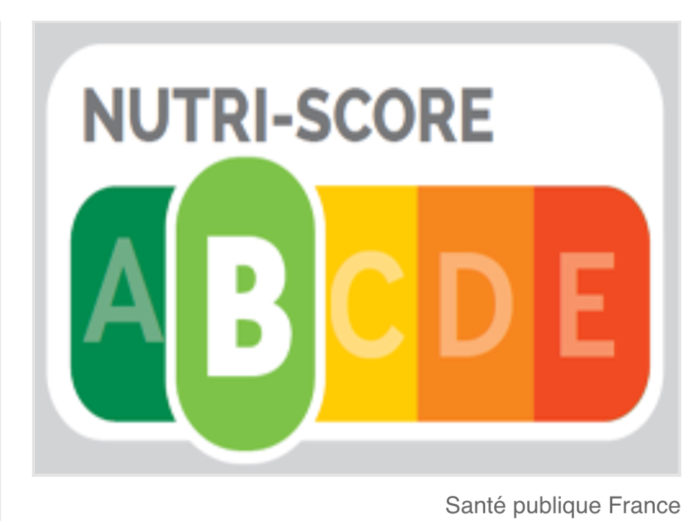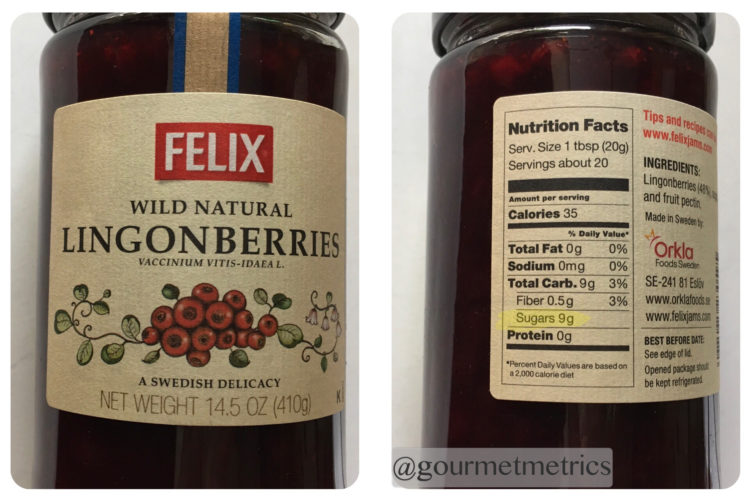Pictured above are my favorite oatmeal raisin cookies. Let’s call them the next best thing to freshly baked. Each little package is processed for local distribution with a list of ingredients but, on closer examination, you’ll notice something is missing.
All manufacturers are required to label products. But only some manufacturers are required to add nutrition facts. When a package of cookies like this one is sold without a nutrition facts label, it means the production batch is small.
So I started thinking, do I really need to know the nutrition stats for these very tasty cookies?
We already know cookies are calorie dense. Most cookies are 400 to 500 calories per 100 grams / 110 to 140 calories per ounce. I weighed the cookies from the package pictured above. The results – a serving size of one cookie (about 45 grams / 1.5 ounces) clocks in at 200 calories plus / minus 50.
We already know cookies are indulgent. The basic formulation is always the same no matter if the cookies are freshly baked with your grandmother’s recipe or turned out in massive numbers using industrial processing and technology. That formulation is flour, sugar, and fat. Most folks don’t need a label to tell them cookies are high in fat and sugar and calorie dense.
We always have an ingredient list. The cookies pictured above are made from organic wheat flour, brown sugar, butter, raisins, oats, eggs, salt, vanilla extract, baking powder, baking soda. It’s a clean list of quality ingredients with oats being a good source of fibers. Butter instead of less expensive palm or canola oil. Brown sugar instead of dextrose or high fructose corn syrup. No gums or emulsifiers to improve the texture. No preservatives to keep the cookies shelf stable for years so eat quickly or store in the freezer.
So you see there’s a lot we can do using common sense and an ingredient list. Our nutrition facts label serves manufacturers and analysts well, but it’s not consumer friendly. Most countries have experimented with various formats, symbols, graphics but, in my observation at least, no one has found an optimal approach. I like to think of nutritional labeling as a work in progress. In the meantime, a little common sense goes a long way.










